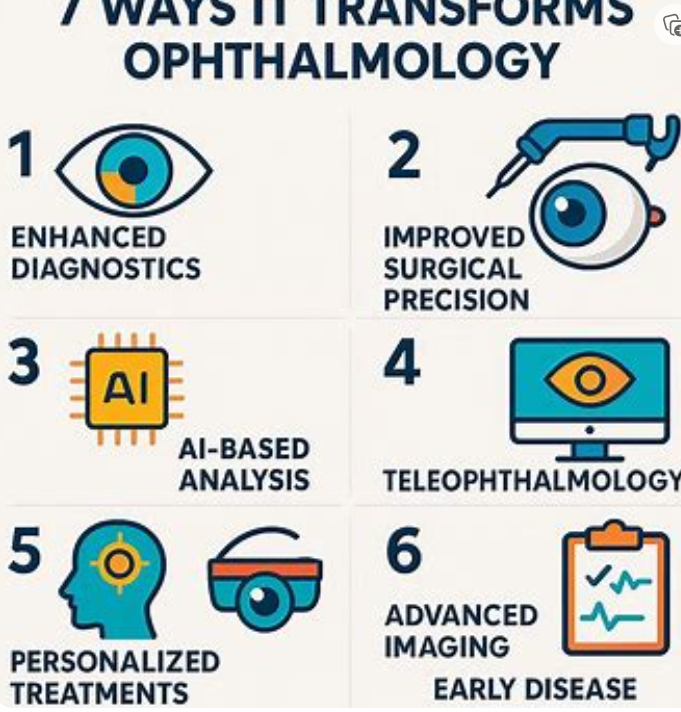Introduction
DGH A is redefining the landscape of ophthalmic diagnostics with its groundbreaking ultra-portable design and pinpoint accuracy. As eye care professionals seek advanced tools to enhance patient outcomes, this innovative A-Scan ultrasound device from DGH Technology stands out. In this comprehensive guide, we’ll dive deep into what makes DGH A a game-changer, from its key features and real-world applications to integration tips for clinics. Whether you’re a technology solutions professional exploring precision instruments or hunting for information technology jobs in healthcare, this article uncovers practical insights, step-by-step guides, and expert advice to help you leverage DGH A effectively. By the end, you’ll understand why it’s essential for modern ophthalmology practices.
What Is DGH A and Why Does It Matter?
At its core, DGH A—formally known as the Scanmate A or DGH 6000—is a handheld, USB-powered A-Scan ultrasound device designed specifically for ocular biometry. It measures critical eye parameters like axial length, anterior chamber depth (ACD), and lens thickness, which are vital for intraocular lens (IOL) calculations during cataract surgery. Unlike bulky traditional machines, DGH A’s compact form factor (just 5.73” x 3.45” x 1.50” and under 1 lb) makes it ideal for busy clinics, traveling surgeons, or even remote screenings.
In an era where precision is paramount, DGH A addresses common pain points in eye care. For instance, corneal compression in contact-mode measurements can skew results by up to 0.2 mm, leading to suboptimal IOL power selection. This device counters that with smart features like compression lockout, ensuring readings with a repeatability of ±0.03 mm in immersion mode. For technology solutions professionals, it’s a prime example of how compact hardware meets sophisticated software to deliver reliable data.
The Evolution of A-Scan Technology
A-Scan ultrasound has been a staple in ophthalmology since the 1950s, but DGH A represents a leap forward. Early devices were tethered to large consoles, limiting mobility. Today, with advancements in miniaturization and AI-driven waveform analysis, DGH A brings lab-grade accuracy to your palm. This evolution ties into broader trends in precision technologies international, where companies like DGH Technology collaborate on high-stakes engineering for medical applications.
Imagine a rural clinic struggling with outdated equipment—DGH A empowers them with the same tools used in top-tier hospitals. Its role in myopia management, tracking axial length progression in children, is particularly timely as global myopia rates soar to 50% by 2050.
Key Features of DGH A That Set It Apart
DGH A isn’t just portable; it’s packed with user-centric innovations that streamline workflows. Let’s break down the standout features.
Ultra-Portable and Versatile Design
- Dimensions and Weight: Weighs less than 1 lb (unit only), making it easier to carry than a smartphone.
- Dual Modes: Supports contact (direct probe on cornea) and immersion (Prager Shell® for zero compression) for flexible use cases.
- Probe Specs: 10 MHz fixed transducer for high-resolution imaging (0.01 mm).
These elements make DGH A a favorite among traveling ophthalmologists. In fact, its USB connectivity allows seamless pairing with any Windows laptop, turning any setup into a biometry station.
Advanced Measurement Guidance and Accuracy
What truly elevates DGH A is its intelligent feedback system:
- Real-Time Waveform Analysis: Displays live echoes to guide probe alignment.
- Audible Tones and Grading: 1- to 3-star ranking with beeps for optimal positioning—3 stars mean peak accuracy.
- Compression Lockout: Adjustable sensitivity prevents flawed readings, with visual and audio alerts.
For precision technologies international enthusiasts, this mirrors aerospace-grade tolerances, where even microns matter. In clinical trials, DGH A has shown 99% agreement with gold-standard immersion biometry.
| Feature | Benefit | Specification |
|---|---|---|
| Alignment Ranking | Reduces user error | 1-3 star system with audible feedback |
| Resolution | High precision | 0.01 mm |
| Repeatability | Consistent results | ±0.03 mm STDEV (immersion) |
| Measurement Ranges | Versatile coverage | Axial: 15-40 mm; ACD: 2-6 mm; Lens: 2-7.5 mm |
This table highlights how DGH A balances simplicity with sophistication.
Software Powerhouse for IOL Calculations
The real magic happens in the software. DGH A leverages PC processing for:
- IOL Formulas: Supports SRK II, Holladay 1, Haigis, and post-refractive options like Double K.
- Custom Reports: Generate PDF-ready IOL sheets or axial length progression charts for myopia tracking.
- EMR Integration: Exports data to electronic health records, saving hours on documentation.
As an unrestricted license, install it across multiple workstations—perfect for group practices. For information technology jobs seekers, roles in medical software integration often involve tools like this, blending hardware with EHR systems.
How to Use DGH A: A Step-by-Step Guide
Getting started with DGH A is straightforward, but mastering it requires practice. Here’s a detailed walkthrough for optimal results.
Step 1: Setup and Calibration
- Connect the device via Micro USB to a compatible Windows PC (10+ 64-bit, i3 processor, 4GB RAM).
- Launch the Scanmate A software and enter your license key.
- Calibrate the probe in air mode to ensure baseline accuracy—takes under 30 seconds.
Pro Tip: Always update firmware via DGH’s portal for the latest algorithms.
Step 2: Patient Preparation and Measurement
- Input patient demographics (age, refraction history) to auto-populate IOL constants.
- Choose mode: Contact for quick checks; immersion for pediatrics or dense cataracts.
- Apply gel (contact) or fill the shell with saline (immersion), then gently place the probe.
- Listen for alignment tones—aim for 3-star grading. Acquire 3-5 scans; software averages them automatically.
- Review waveforms: Clear spikes for retina, lens, and cornea confirm quality.
In a busy clinic, this process clocks in at 2-3 minutes per eye, boosting throughput by 30%.
Step 3: IOL Calculation and Reporting
- Select formula (e.g., Hoffer Q for short eyes).
- Adjust for astigmatism or prior LASIK using history-derived K values.
- Generate report: Single-page IOL summary or multi-visit progression graph.
- Export to PDF or EMR—customize templates for branding.
For myopia management, track changes quarterly:
- Baseline axial length at first visit.
- Plot vs. age on progression charts.
- Alert if growth exceeds 0.1 mm/year, prompting intervention like orthokeratology.
Common Pitfalls and Troubleshooting
- Fuzzy Waveforms: Check gel application or probe cleanliness.
- Lockout Triggers: Dial down sensitivity for sensitive corneas.
- Software Glitches: Restart USB; ensure 1280×800 resolution display.
With these steps, even novices achieve pro-level results. Instructional technology services in med schools now incorporate DGH A simulations for hands-on training.
DGH A in Clinical Practice: Real-World Examples
DGH A’s versatility shines in diverse scenarios. Consider Dr. Elena Vasquez, a cataract specialist in a high-volume urban clinic. Facing backlogs, she adopted DGH A for pre-op biometry. “It cut my measurement time in half,” she shares, “and post-op refractive surprises dropped to under 5%.” Her team uses immersion mode for 80% of cases, leveraging the Prager Shell® for artifact-free data.
In pediatric care, DGH A excels at myopia screening. A study in the Journal of Ophthalmology found it detected early elongation in 92% of at-risk kids, enabling timely atropine therapy. For technology solutions professionals, this underscores DGH A’s role in preventive healthcare tech.
Integrating DGH A with Broader Tech Ecosystems
Beyond standalone use, DGH A pairs with OCT scanners or phoropters for full pre-op workflows. In networked setups, share data across departments—vital for multispecialty centers. This integration highlights opportunities in at&t technology jobs, where telecom infrastructure supports secure cloud-based EMRs for devices like DGH A.
However, the tech world isn’t without drama. Recent events, like the carahsoft technology fbi raid on a major IT reseller, remind us of compliance needs in government-linked medical tech contracts. DGH A, with its HIPAA-ready exports, helps clinics navigate such regulatory waters.
Career Opportunities: DGH A and the Growing Demand for Tech Pros
As ophthalmic tech advances, so do job prospects. Information technology jobs in healthcare are booming, with a 15% growth projected by 2030. Roles like biomedical engineers calibrating DGH A units or software devs enhancing its algorithms pay $90K+ annually.
For specialized paths:
- Assisted Reproductive Technology Jobs Analogy: Just as IVF tech demands precision timing, ophthalmic roles require exact biometry—transferable skills for fertility clinics adopting ultrasound tech.
- Technology Solutions Professional Roles: Consult on DGH A implementations, earning $120K in enterprise sales.
| Job Title | Key Skills | Avg. Salary (USD) | DGH A Relevance |
|---|---|---|---|
| Ophthalmic Technician | Biometry, patient handling | $55,000 | Daily A-Scan use |
| Biomedical Engineer | Device calibration, software | $95,000 | Firmware updates |
| Healthcare IT Specialist | EMR integration | $110,000 | Data export setups |
Precision technologies international firms, like those in aerospace-derived manufacturing, supply components for DGH A, opening global doors.
Advanced Applications: Myopia Management and Beyond
DGH A’s axial length reports are a boon for pediatric ophthalmology. Track progression with:
- Baseline Scan: Measure at age 6-8.
- Follow-Ups: Every 6 months, plot against norms.
- Interventions: If >0.3 mm/year, recommend low-dose atropine.
In research, DGH A supports trials on novel IOLs, providing reproducible data for FDA submissions. Instructional technology services leverage it for virtual reality training modules, simulating probe placement.
Challenges and Future Innovations in DGH A Tech
No device is perfect. Battery life (via host PC) limits ultra-remote use, and the $5K price tag may deter solos—though ROI hits in months via efficiency gains. Future updates? AI auto-formula selection and wireless probes.
In the precision tech space, competitors like Zeiss IOLMaster offer optical biometry, but DGH A’s affordability ($4,995 kit) and ultrasound reliability win for dense media cases.
FAQs
What exactly is DGH A, and who should use it?
D GH A is a portable A-Scan ultrasound for eye measurements, perfect for ophthalmologists and optometrists. As a technology solutions professional, you’ll love its seamless integration into clinic workflows for accurate IOL calcs.
How does DGH A improve accuracy over traditional A-Scans?
It uses compression lockout and 3-star alignment grading to minimize errors, achieving ±0.03 mm repeatability. This makes it a staple in precision technologies international for medical devices.
Can DGH A help with information technology jobs in healthcare?
Absolutely! Mastering D GH A opens doors to IT roles in EMR integration and device support, blending hardware with software in growing information technology jobs sectors.
Is there any controversy around tech like DGH A, similar to the carahsoft technology fbi raid?
While D GH A focuses on clinical precision, the broader tech reseller space has seen scrutiny, like the carahsoft technology fbi raid over contracts. Always prioritize compliant vendors for peace of mind.
How does DGH A fit into instructional technology services for training?
Many med schools use D GH A in simulations via instructional technology services, teaching biometry hands-on. It’s a practical tool for aspiring eye care pros.
Are there jobs linking DGH A to assisted reproductive technology jobs?
Skills in precision ultrasound transfer—both fields demand exact measurements. Transitioning from ophthalmic tech to assisted reproductive technology jobs is feasible with D GH A experience.
What about at&t technology jobs and DGH A connectivity?
DGH A’s USB setup benefits from robust networks; at&t technology jobs often involve optimizing telecom for medical IoT, ensuring smooth data flow from devices like this.
Conclusion
In summary, DGH A stands as a pinnacle of portable ophthalmic innovation, delivering unmatched accuracy, ease, and versatility for everything from cataract surgery to myopia control. We’ve explored its features, usage, clinical impacts, and even ties to broader tech careers, proving why it’s indispensable in 2025’s eye care world. Whether you’re optimizing your practice or eyeing information technology jobs, embracing D GH A positions you at the forefront of precision medicine.
Ready to elevate your diagnostics? Visit DGH Technology’s site today to demo D GH A and unlock precision like never before. Your patients—and your efficiency—will thank you.



